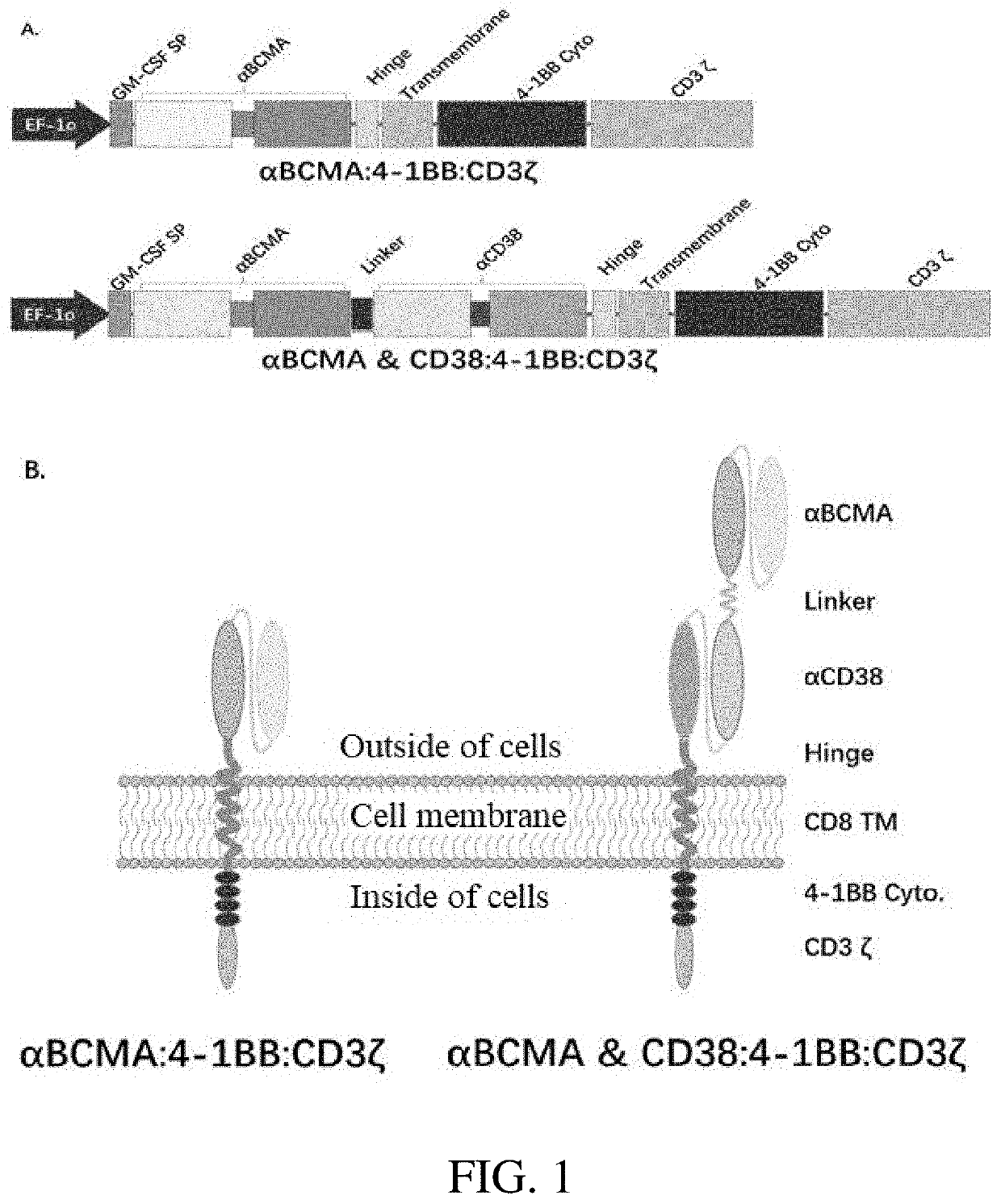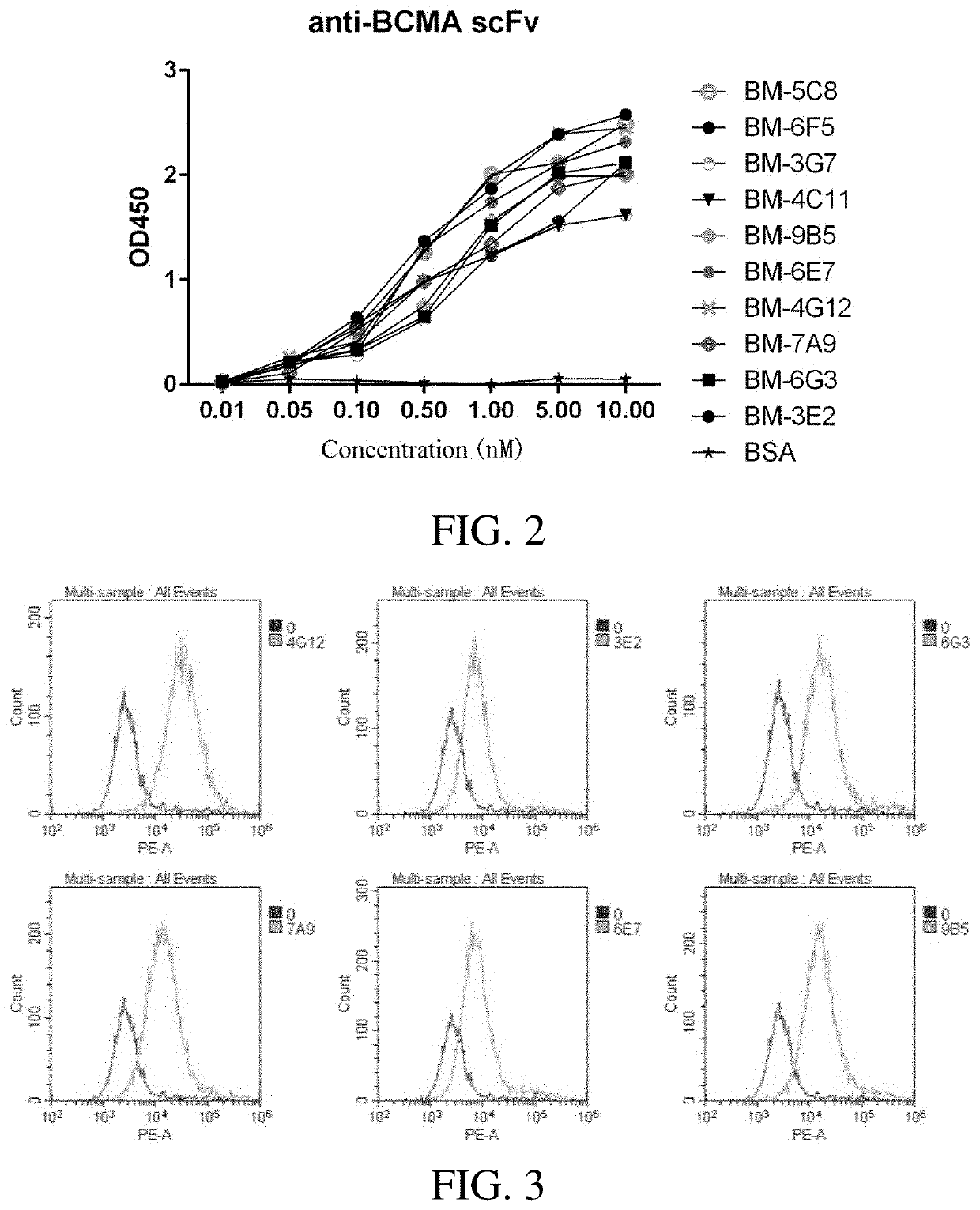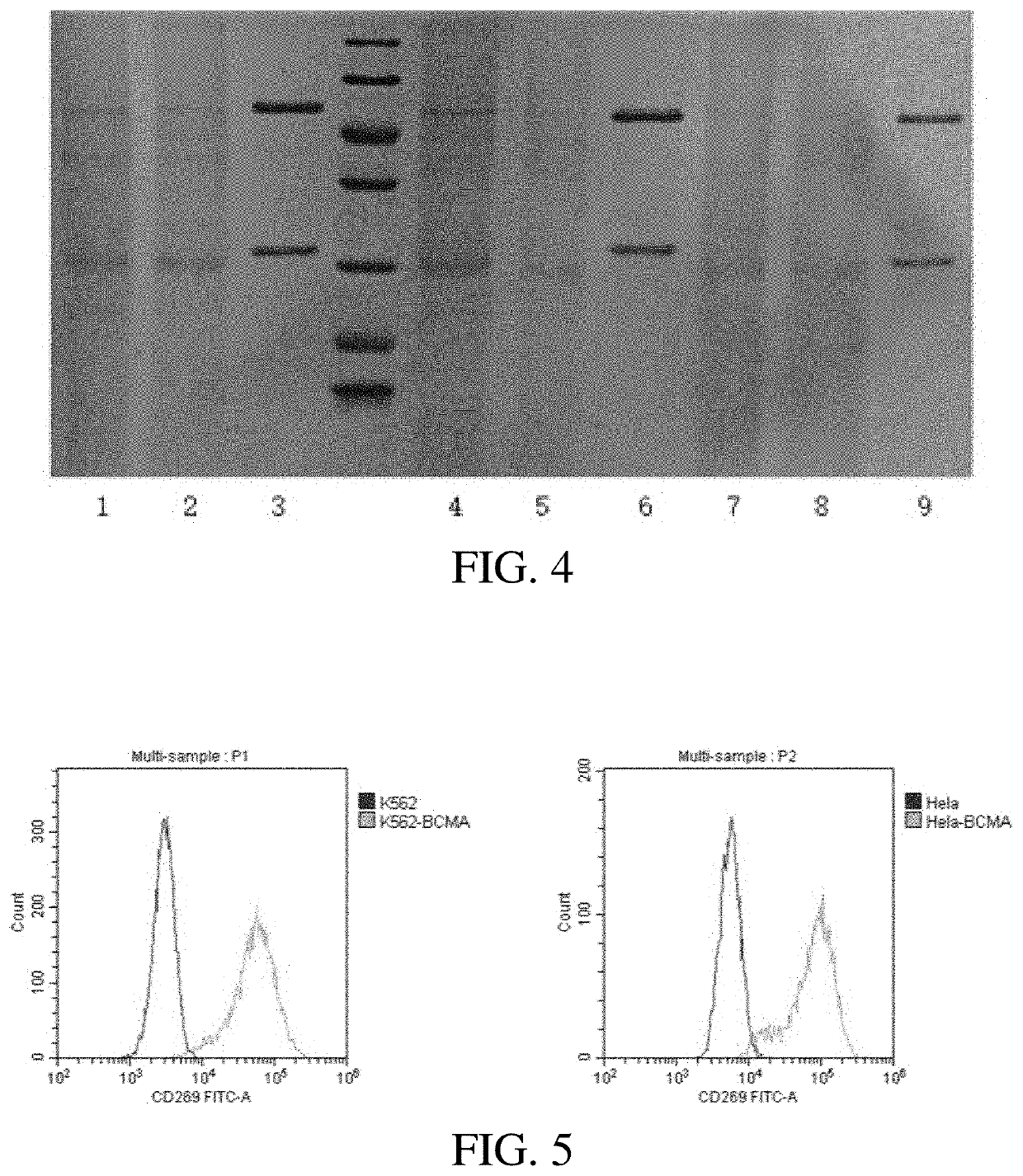Bispecific chimeric antigen receptors and their application in the treatment of tumor
a chimeric antigen receptor and tumor technology, applied in the field of cell immunotherapy, can solve the problems of primary target of car-t lymphocytes, immune responses to normal tissues or cells, and lymphocytes are off-target, and achieve the effects of enhancing the targeting of car-t cells to kill tumors, strong specificity, and effective activation
- Summary
- Abstract
- Description
- Claims
- Application Information
AI Technical Summary
Benefits of technology
Problems solved by technology
Method used
Image
Examples
example 1
Construction of Human Stable BCMA-Expressing Cell Lines
[0058]1.1 Construction of a Plasmid Vector
[0059]The vector system used in this example belongs to the third-generation, self-inactivating lentiviral vector system, this system has three plasmids, i.e., a packaging plasmid psPAX2 for coding the protein Gag / Pol and coding the protein Rev, an envelope plasmid pMD2.G for coding the protein VSV-G and a recombinant plasmid pCDH-CMV-huCD19-EF1-GFP-T2A-Puro for coding human BCMA extracellular region and transmembrane region based on an empty vector plasmid pCDH-CMV-MCS-EF1-GFP-T2A-Puro (purchased from Addgene company).
[0060]In accordance with the human BCMA sequence provided by Genbank Accession No. NM_001192.2, a PCR-based gene synthesis was used for synthesizing a signal peptide, a human BCMA extracellular region, a transmembrane region and an intracellular region, PCR amplification of
SEQ ID NO: 187(huBCMA-F): 5>ATGTTGCAGATGGCTGGGCAGSEQ ID NO: 188(huBCMA-F): 5>TACCTAGCAGAAATTGATTTC
[00...
example 2
Screening and Identification of Specific Single-Chain Antibody (scFv) Binding to Human BCMA
[0072]2.1 Screening of Anti-Human BCMA Specific Single Chain Antibody by Phage Display
[0073]The sequence of the single-chain antibody specifically binding to human BCMA was screened from directionally modified human single-chain antibody phage libraries by phage display technology of single chain antibody.
[0074]To achieve such objective, a glycerol bacteria from a phage display natural library (a self-constructing library) of fully human single chain antibodies was inoculated in a 400 ml 2×YT / ampicillin medium to reach a cell density of OD600=0.1, and cultured at 37° C. under shaking condition (200 rpm) till the cell density reached OD600=0.5. 1012 Pfu of M13KO7 helper phage (purchased from ThermoFisher Corporation) was used to infect and the cultivation was performed for 30 minutes at 30° C. and 50 rpm. After adding 50 mg / L kanamycin, the cultivation was performed for 30 minutes at 37° C. und...
example 3
Preparation and Activity Analysis of Anti-BCMA Antibodies
[0091]3.1 Light and heavy chain eukaryotic expression vectors of the selected single-chain antibodies were constructed, transfected with HEK293F to induce a recombinant expression and the purification was performed. The light and heavy chains in the sequence of single chain antibody obtained in example 1 were constructed respectively into a monoclonal antibody expression plasmid pCMV-V5-Fc, after the sequence was confirmed by sequencing without errors, the plasmid was prepared in large quantity. The light and heavy chain expression plasmids were mixed in an appropriate ratio, and then transfected into HEK-293 F cells with well growth, and cultured continuously for 7 days at 37° C. with 5% CO2 in a shaker (125 rpm). Centrifugation at 4000 rpm was performed for 10 min, the precipitate was removed, the supernatant was collected, and washed with 0.45 μm membrane filter, the treated samples were subjected to a Protein A (available ...
PUM
| Property | Measurement | Unit |
|---|---|---|
| Fraction | aaaaa | aaaaa |
| Volume | aaaaa | aaaaa |
| Volume | aaaaa | aaaaa |
Abstract
Description
Claims
Application Information
 Login to View More
Login to View More - R&D
- Intellectual Property
- Life Sciences
- Materials
- Tech Scout
- Unparalleled Data Quality
- Higher Quality Content
- 60% Fewer Hallucinations
Browse by: Latest US Patents, China's latest patents, Technical Efficacy Thesaurus, Application Domain, Technology Topic, Popular Technical Reports.
© 2025 PatSnap. All rights reserved.Legal|Privacy policy|Modern Slavery Act Transparency Statement|Sitemap|About US| Contact US: help@patsnap.com



